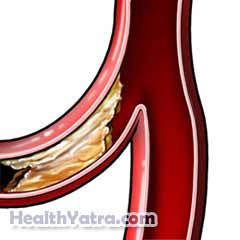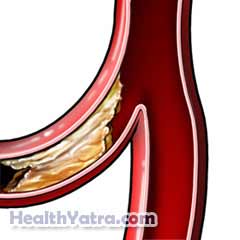Definition
Cholesterol is a waxy substance that is similar to fat. There are different types of cholesterol including:
- High-density lipoprotein (HDL) cholesterol
- Low-density lipoprotein (LDL) cholesterol
Cholesterol tests measure the levels of cholesterol in the blood. They can measure the amount of HDL cholesterol, LDL cholesterol, and your total cholesterol levels. Your doctor may use a test called the lipid profile test. This test measures the cholesterol levels plus triglycerides. Triglycerides are are a type of fat or lipid in the blood.
Reasons for Test
This test is done to measure the levels of cholesterol in the blood. Abnormal levels of cholesterol are linked to an increased risk of plaque formation in blood vessels. This plaque formation can lead to heart attacks or strokes. Your doctor will use these results to estimate your risk of heart disease. For example:
- High LDL levels increase the risk of heart disease.
- Low HDL levels increase the risk of heart disease.


Possible Complications
There are no major complications associated with this test.
What to Expect
Prior to Test
Steps to take before the test depend on the test you are having. For example:
- Fasting lipid profile—You will need to stop eating or drinking 9-12 hours before the test. Water is allowed during this time.
- Total cholesterol test and total cholesterol test with HDL measurement—You do not need to fast.
Description of Test
You will be asked to sit. An area inside your elbow will be cleaned with an antiseptic wipe. A large band will be tied around your arm. The needle will then be inserted into a vein. A tube will collect the blood from the needle. The band on your arm will be removed. Once all the blood is collected, the needle will be removed. Some gauze will be placed over the site to help stop bleeding. You may also be given a bandage to place over the site. The process takes about 5-10 minutes.
After Test
After the blood sample is collected, you may need to stay seated for 10-15 minutes. If you are lightheaded, you may need to stay seated longer. Once you feel better, you can leave. After the blood draw, you may have pain, swelling, bruising, and bleeding.
How Long Will It Take?
A few minutes.
Will It Hurt?
It may hurt slightly when the needle is inserted.
Results
Talk to your doctor about your test results. Your doctor may recommend more testing done depending on your test results.
Call Your Doctor
Call your doctor if any of the following occurs:
- You have increased redness, pain, or discharge from the blood test site.
- You have severe bruising or swelling.
In case of an emergency, call for medical help right away.
